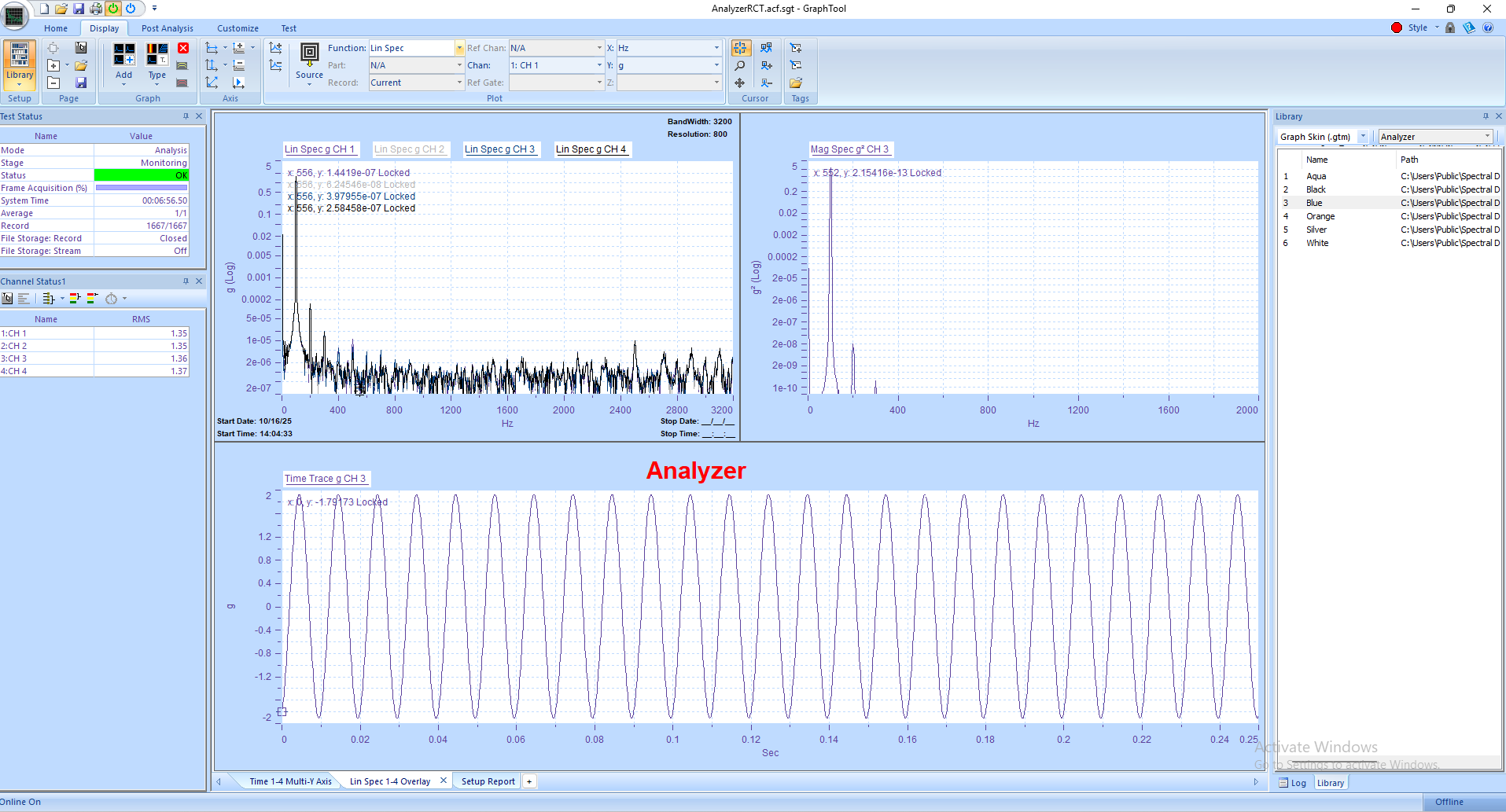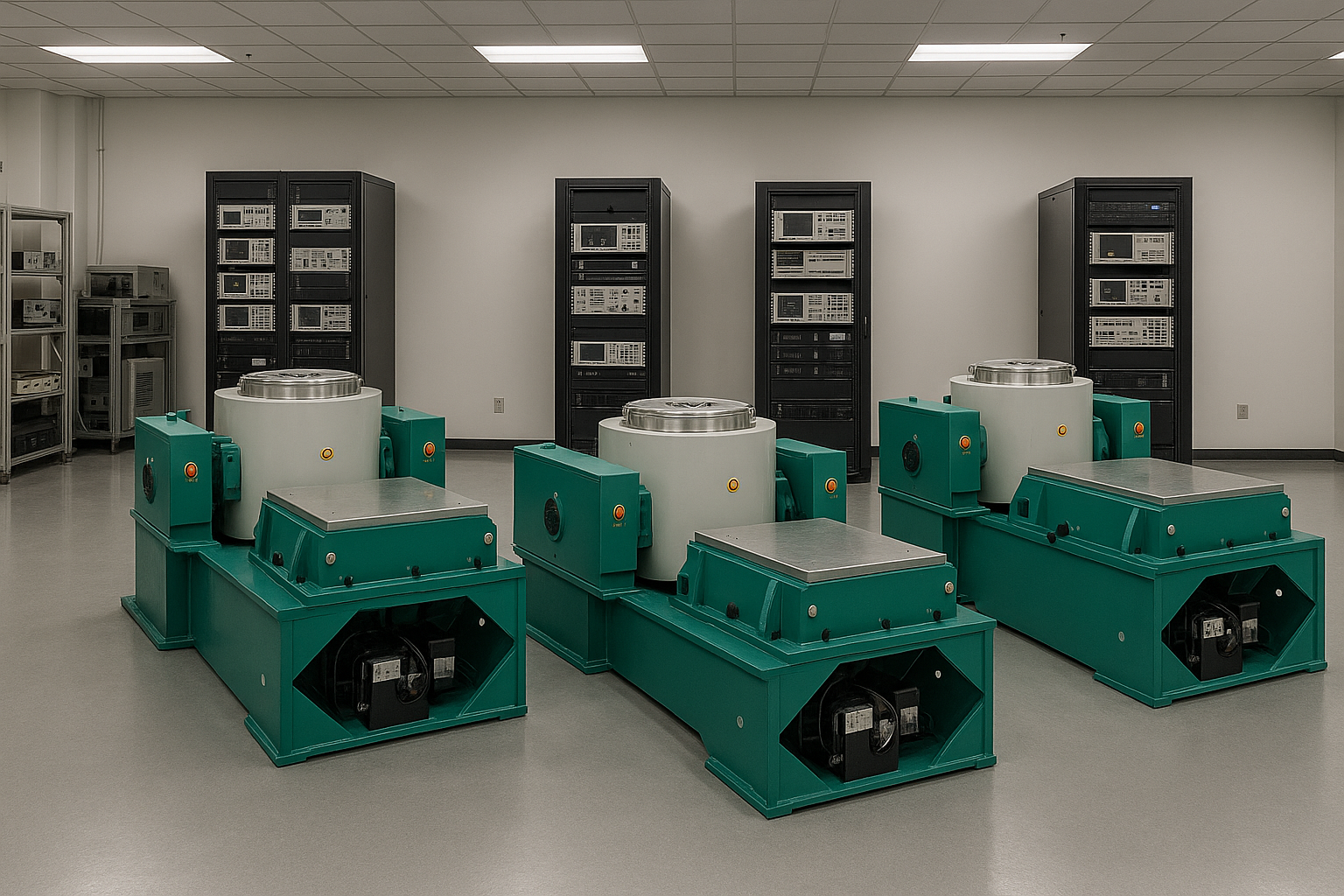Analyzer

Panther Analyzer extends the power of Spectral Dynamics' next-generation Panther platform with...
 Panther boasts an impressive maximum sample rate of 262,144 samples per second. This high sample rate is a really significant advantage compared to controllers with lower sample rates for a few key reasons:
Panther boasts an impressive maximum sample rate of 262,144 samples per second. This high sample rate is a really significant advantage compared to controllers with lower sample rates for a few key reasons:
• First, it directly impacts the bandwidth of the data you can accurately capture. The maximum frequency you can reliably measure is typically 2.31 (or 4.9 depending on your selected filter set) of your sample rate (the Nyquist frequency). So, with a 262,144 Hz sample rate, Panther can accurately capture frequencies up to about 102.4KHz. This is crucial for testing applications that involve very high-frequency vibrations, which are common in things like aerospace, electronics, or certain types of material testing. Lower sample rate controllers would simply miss or misrepresent these high-frequency phenomena.
• Second, a higher sample rate allows for much finer resolution in the time-domain data. This means you can capture very short-duration events with greater detail and accuracy. For transient events like shock pulses or impacts, this detailed capture is essential for understanding the full picture of the event's characteristics.
• Third, it provides more flexibility in processing. With more data points per second, you have greater precision when performing calculations like Fast Fourier Transforms (FFTs), which are fundamental to vibration analysis. This leads to more accurate spectral analysis, better confidence intervals, and more reliable test results overall. In short, Panther's high sample rate means it can handle a wider range of demanding test scenarios, especially those involving high frequencies or transient events, with greater accuracy and detail than lower-spec controllers.